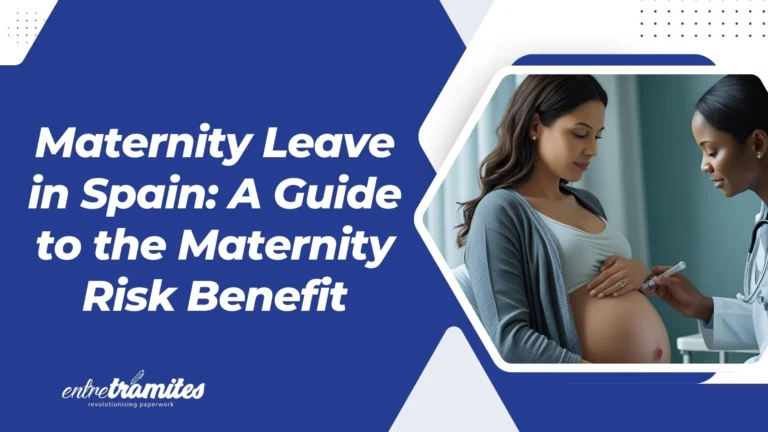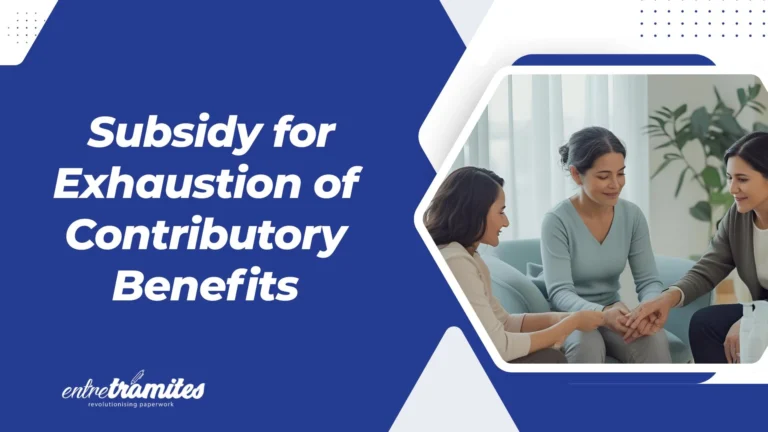Pregnancy is a time of great change and expectations, but it can also bring unexpected challenges, especially in the workplace. In Spain, the Social Security system provides a series of benefits to protect pregnant workers whose professional activity may pose a risk to their health or that of their future baby. If you find yourself in this situation or are looking for information about the maternity risk benefit, this comprehensive guide will give you the keys to understanding your rights and how to access them.
What is the Maternity Risk Benefit and When Can You Apply for It?
The maternity risk benefit (prestación por riesgo en el embarazo) is a financial payment designed to compensate for a worker’s loss of income when their job poses a risk to their pregnancy or the fetus, and this risk cannot be avoided by changing their position or role within the same company. It should not be confused with sick leave (baja por enfermedad común) or maternity leave (baja por maternidad), as its specific purpose is to protect the health of the mother and baby from workplace risks.
This benefit is activated when exposure to agents, procedures, or working conditions could negatively affect the health of the pregnant worker or the fetus. For example, if your job involves lifting heavy loads, exposure to hazardous chemicals, radiation, strenuous repetitive movements, or forced postures that compromise the pregnancy. It is crucial that the risk is certified by a Social Security doctor and that the company cannot adapt the position or relocate you to another one without risk.
Requirements to Access the Benefit
To be a beneficiary of the maternity risk benefit, you must meet a series of requirements established by the Social Security system:
- Be affiliated and registered in any Social Security scheme.
- Be up to date with your Social Security payments, if you are directly responsible for them.
- There must be a risk to the pregnancy or fetus derived from your working conditions. This risk must have been certified by the medical services of the National Social Security Institute (INSS) or a collaborating mutual insurance company.
- The company must have exhausted all options to eliminate or reduce the risk: This includes adapting the job, changing your position, or relocating you to another department. Only if none of these options are viable can you access the benefit.
How to Apply: A Step-by-Step Process
The process for applying for the maternity risk benefit usually follows these steps:
- Communicate with your company: Inform your employer about your pregnancy so they can assess whether your job poses any risk. The company, in collaboration with the Occupational Risk Prevention Service, must perform a risk assessment and propose measures to eliminate or reduce them.
- Obtain a medical report: Your general practitioner or gynaecologist will issue a report specifying the characteristics of your pregnancy and the need to avoid certain risks.
- Get a company certificate: The company must issue a certificate stating the impossibility of adapting your position or relocating you to another without risk, following the occupational risk assessment.
- Submit the application to the Mutua or the INSS: With all the documentation (medical report, company certificate, risk report), you should go to the mutual insurance company (mutua) your company is affiliated with, or directly to the National Social Security Institute (INSS) if your company does not have a mutua. They will be in charge of processing your application and authorizing the benefit.
- Recognition of the right: Once the application is submitted and the documentation is analyzed, the mutua or INSS will notify you of the resolution. If it is favourable, the start date of the benefit will be determined.
It is essential not to delay this process once a risk is detected to ensure the protection of both the mother and the baby.
Benefit Amount and Duration
The amount of the maternity risk benefit is equivalent to 100% of the worker’s regulatory base. This regulatory base is calculated similarly to the temporary disability benefit, using the professional contingencies contribution base from the month prior to the suspension of the contract as a reference.
The duration of the benefit extends from the day after the suspension of the work contract due to risk until the day before the start of the compulsory maternity leave or, failing that, until the day of childbirth. This means it covers you for the entire period during which your pregnancy is exposed to occupational risks that cannot be mitigated in your job.
Frequently Asked Questions (FAQs)
Is the maternity risk benefit the same as maternity leave? No, they are different benefits. The maternity risk benefit covers the period when the worker cannot perform her job due to a risk to her health or that of the fetus. Maternity leave in Spain is a paid permit after childbirth or adoption for the care of the baby.
Do I need a minimum contribution period to access the benefit? No. Unlike other benefits, no minimum contribution period is required for the maternity risk benefit.
What do I do if my company refuses to perform the risk assessment or adapt my position? If your company refuses or does not cooperate, you can contact the Labour and Social Security Inspectorate to intervene and enforce occupational risk prevention regulations. You can also seek legal or union advice.
The maternity risk benefit is a fundamental right that guarantees the protection of the health of pregnant workers and their future babies in the workplace in Spain. Knowing your rights and the steps to process this aid is essential to face pregnancy with the peace of mind and security you deserve. Do not hesitate to inform yourself and apply for it if your situation requires it, always looking out for your well-being and that of your family.
We offer labor, tax, and accounting advisory services tailored to your needs. If you require personalized assistance to manage your labor obligations, at Entre Trámites we offer management and tax advisory services for freelancers and SMEs. You can contact us through this contact form for us to call you, or if you prefer, you can schedule a free consultation or write to us on WhatsApp.





